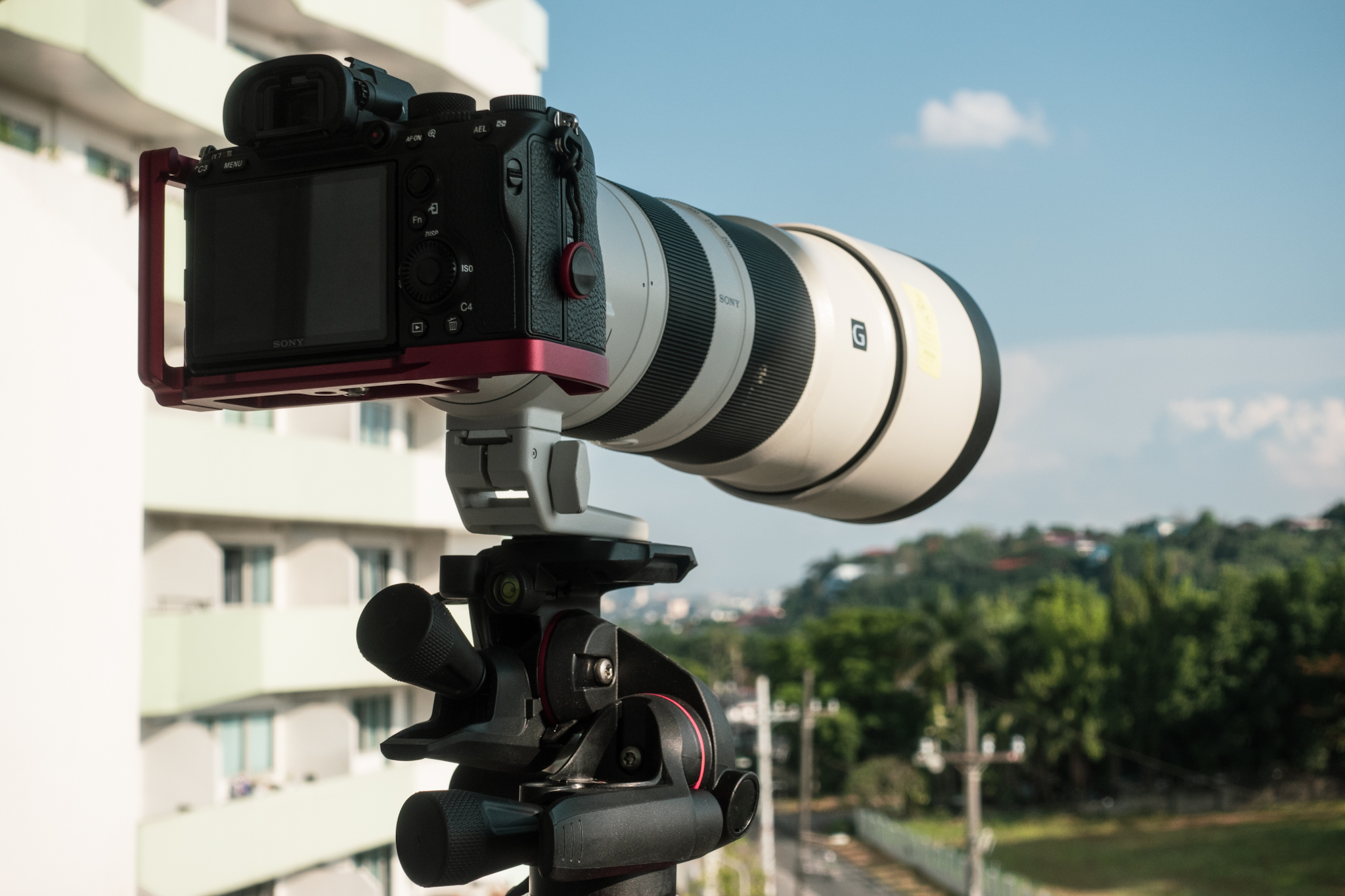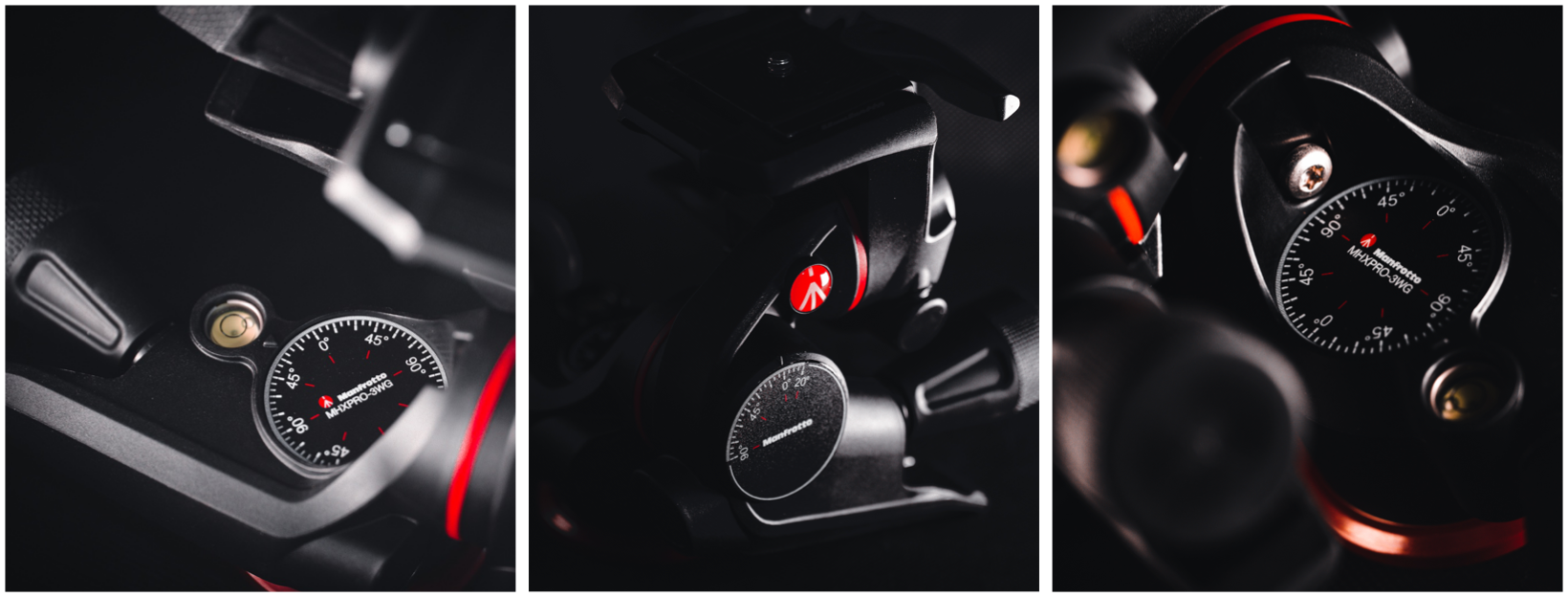Is this precision tool worth considering for your photography workflow?
Three-way geared precision heads aren’t really the most popular kind of tripod heads, and this may be for practical reasons. Most tripod kits come with ball-heads that are often very simple to operate with one or two knobs to control everything. Pan-and-tilt heads are also relatively common for most entry-level tripods but are generally less used because of the obvious simplicity of the ball-head’s lock-unlock system. Geared precision heads are generally better known by experienced photographers who may have found the need for the benefits of what is usually a more complicated and heavier tripod setup. That is mostly because of the efficiency in making minute adjustments as well as setting up meticulous framing and composition.
What Is a Three-Way Geared Precision Head?

A geared head is a kind of tripod head that has three separate control mechanisms for three independent actions. One knob is dedicated to panning, another knob is for horizontal tilt, and the third controls only the vertical or forward tilt. Each of the three different axes of motion is adjusted independently from the others to be able to achieve precise adjustments when framing a shot. Unlike ball heads and pan-tilt heads, where the knobs control only the friction lock that allows or restricts movement, each knob on the three-way geared head controls a gear that has a resulting movement directly proportional to the turn made on the knob. This way, the photographer has full control of the resulting movement, no matter how small it is.
What Is a Three-Way Geared Precision Head Used For?
Geared heads are useful in various kinds of photography that require meticulous composition, especially when not everything can be corrected in post. It is, however, not an absolute essential but more of a tool that makes things more convenient and efficient. Geared heads allow for controlled movement and precise adjustments often at the expense of speed (especially if the user hasn’t entirely gotten used to the controls). Using them isn’t as simple as the unlock-adjust-lock process of ball heads, but for an experienced user, the controlled movements may actually lessen overshooting or unintended adjustments on a different axis.
The Manfrotto Three-Way Geared Precision Head
The Manfrotto MHXPRO-3WG is made up of mainly matte black Technopolymer with rubber-coated knobs and red metallic accents. The use of technopolymer allows for a relatively lighter net weight on the head without actually sacrificing payload. It adds a total of 13.0 cm to the tripod’s height, while the base width is at 6 cm. Each of the three knobs is coated with a rubberized material for better grip when adjusting and each with an accompanying spring-clamp lock system that works like motorcycle brakes that gives the user an option for faster and bigger movements.

Rubber coated knobs, angle indicators, made of technopolymer with red accents.
On the same axes as the movement of adjustment on each knob are conveniently placed angle indicators that allow the user to monitor the degree of rotation that has been made for more controlled adjustments. Alongside them are individual neon green bubble level indicators to guide each adjustment, especially when the tripod is on uneven ground. The MHXPRO-threeWG comes with a quick-release mounting mechanism specifically made for the Manfrotto 200-PL14 plate. There is no option for side-mounting (Arca Swiss compatible) plates on the three-way geared head, unlike the Manfrotto X-Pro ball head.
Functionality and Motion
The pan knob allows for a full 360° rotation of movement with seamless motion and no clicks. The lateral tilt allows for 20° to the right and up to 90° tilt to the left for an upright vertical frame. The vertical tilt allows for 20° upward movement and a full 90° tilt down. Squeezing the spring-clamp locks allows for bigger and faster movement that can be followed by precise adjustments through the knobs.

Vertical and horizontal tilt movement.
The 750-gram overall weight of the head lessens the bulk of carrying the relatively bigger tripod head and also increases the probability of using it with even smaller tripods as it doesn’t virtually add much to the load. In comparison to the older three-way geared head, this is actually extensively lighter. The older Manfrotto 410 geared head weighs in at 1.22 kilograms, while the newer Benro GD3WH is 120 grams heavier, coming in at 870 grams.

MHXPro-3WG carrying a Sony a7R III and Sony FE 200-600mm
Application
The Manfrotto MHXPRO-3WG three-way geared precision head has quite a number of applications in various genres. Geared heads are commonly preferred in architectural photography when precise framing, angles, and strict perspective control are often required. It also gives added control in shooting panoramas, especially when excessive movement can cause distortion of the resulting image.
 This can also be quite helpful in landscape photography, especially when shooting very detailed compositions with wide angle lenses. It would offer precise framing adjustments and the technopolymer build reduces the bulk in carrying it along with your gear and is relatively more resistant to damage from moisture and dust. With the precise adjustments in each axis, it can also be a good tool for shooting multi-row panoramas of wide vistas that may go beyond the lens’ angle of view.
This can also be quite helpful in landscape photography, especially when shooting very detailed compositions with wide angle lenses. It would offer precise framing adjustments and the technopolymer build reduces the bulk in carrying it along with your gear and is relatively more resistant to damage from moisture and dust. With the precise adjustments in each axis, it can also be a good tool for shooting multi-row panoramas of wide vistas that may go beyond the lens’ angle of view.
The three-way geared head is also quite efficient in shooting macro and still life. The precise adjustments can help in achieving close-up focus in very small focus distances, while the controlled lateral and vertical tilt can allow for precise framing in shooting styled setups and flat-lays.
 Other genres and workflows can also benefit from three-way geared heads, specifically those that don’t require rapid movements. With good familiarity with controls, the fine adjustments can do quite well in composing frames with very long telephoto lenses where small movements have big adjustments. The spring-clamp locks give a bit more efficiency as well if large movements are required.
Other genres and workflows can also benefit from three-way geared heads, specifically those that don’t require rapid movements. With good familiarity with controls, the fine adjustments can do quite well in composing frames with very long telephoto lenses where small movements have big adjustments. The spring-clamp locks give a bit more efficiency as well if large movements are required.
What I Liked:
- Lightweight
- Capable payload
- Adjustment precision
What Can Be Improved:
- Not Arca Swiss compatible mounting mechanism
Purchase
You can purchase yours here.







When are Manfrotto going to realise that ArcaSwiss is here to stay? I am looking for a decent three-way geared head for exactly the use case outlined in the article but this head won't even get on the long list (let alone the short list) because it's not Arca-compatible.
Having used their other geared heads I would never buy another. Bulky, large and with a worthless quick release plate.
This is tempting for those who think they can get a great geared head for a lower price.
You can't.
I have been cheap longer than most have been taking pictures and I can say with certainty that money spent on a proper Arca Swiss geared head is worth the money. This is true for any gear of course.
Pain of price once, joy of ownership forever.
What is your suggestion on a geared head? I'm in the market. And while I like the Manfrotto tripod I picked up, I agree in principle regarding the overall long-haul viability of the geared head it came with.
I just bought the Arca Swiss Core 60 to use with my P0. The Core 75 is also good.
For a lower cost but decent alternative I got a Sunway GH Pro II. The Leofoto G2 is also well regarded.
They are cheaper but seem fair value. I am moving to the Core 60 as the Sunway ( which has a lot of happy owners) had a bit of slop in the panning base that gives me alignment issues on multi exposure shots.
I looked at this geared head, but went for the older and seemingly more robust 410 Junior head using mainly metal in its construction.
I find it almost essential for serious architectural photography as getting things level with my old non geared head was a pain.
I cannot say the quick release plate causes me any problems and it works well.
Definitely not a dealbreaker. I prefer arca swiss compatible plates as well so I just added on an adapter.
I have found the Benro GD3WH better than the Manfrotto and it has an arca plate. Mine has had two of the circular plates covering the pivot points come loose, but a dab of contact adhesive fixed them. It’s a good budget option for those of us who can’t stretch to Arca or Acratech.
i have GD3WH too, i love it. i even take it with men when i travel.
I have owned one of these great MHXPRO-3WG heads for five or six years. When I first bought it, I sent it off to Hejnar Photo who converted it to Arca-Swiss quick release for me. I have used this head on four different sets of tripod legs, with a Canon R6 and a 1DMkIV, mounting up to a 100-400 zoom, with no issues. It holds solidly and adjust quickly and easily. I have three different heads, which I use depending on the situation, this MHXPRO-3WG for precision when shooting macros or landscapes, an iFootage Komodo K5 for video work with my R6, and a Sirui G20-KX ball head for general use. They all are great for their purpose.
Really curious about that conversion you had done. Would you mind replying with a photo? :)
I bought my Manfrotto geared head some time around 1984 - it is model #400 - heavier as most tripods, with those tubular quick release 'plates'. Long ago fitted Arca plates on them. Just this week during the Moon eclipse used it again on my just as old very large Manfrotto tripod. Together so heavy that my legally retired body starts to ask 'jacob what the h... are you doing mate ?' .
I can honestly recommend a geared head , I have used it for literally anything, from micro adjustment Architecture with my Sinar P3 , or very precise studio work to stepped panoramas with my Fuji X series and a 300 mm lens.
One day in a hopeful far future my heavy Manfrotto kit will be used by a younger photographer to last his life and many after.
That's awesome! I personally love seeing very durable pieces of gear get passed from one generation to another.